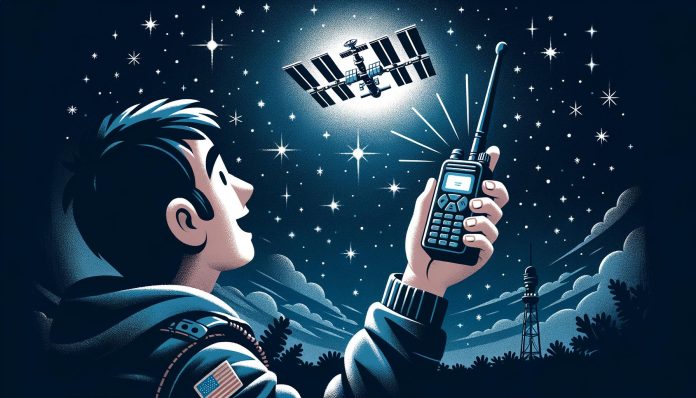As a tech enthusiast and astronomy lover, I often find myself exploring new ways to connect with the cosmos. One of the most fascinating experiences I’ve had is listening to the International Space Station (ISS) using a walkie talkie radio. In this article, I want to share my journey into this unique experience and provide you with all the information you need to try it yourself.
Understanding the International Space Station (ISS)
The International Space Station is a marvel of modern engineering. Orbiting the Earth at an altitude of approximately 400 kilometers (about 248 miles), the ISS serves as a laboratory, observatory, and factory in low Earth orbit. It is a collaborative project involving multiple countries and space agencies, including NASA, ESA, Roscosmos, JAXA, and CSA.
The ISS travels at a speed of about 28,000 kilometers per hour (17,500 miles per hour), completing an orbit around the Earth roughly every 90 minutes. This means the station is constantly moving and can be seen from various locations on Earth.
Why Listen to the ISS?
Listening to the ISS can be a thrilling experience. The ISS communicates with ground stations using radio frequencies, and amateur radio enthusiasts often tune in to these frequencies to hear the astronauts’ transmissions. For tech enthusiasts and astronomy fans like us, this is not just about hearing voices from space; it’s about connecting with the science and technology that make space travel possible.
Equipment You’ll Need
To listen to the ISS with a walkie talkie radio, you’ll need some specific equipment. While traditional walkie talkies operate on UHF and VHF frequencies, the ISS communicates primarily on VHF frequencies. Here’s what you’ll need:
- Walkie Talkie Radio: A two-way radio capable of operating on VHF frequencies (around 144.490 MHz for ISS transmissions).
- Antenna: A higher-gain antenna can improve reception, especially if you live far from the ISS’s orbital path.
- Scanner or Software Defined Radio (SDR): If you want to explore more frequencies or even decode data, you might consider using a scanner or SDR.
- Power Source: Ensure your devices are fully charged or have a reliable power source.
Setting Up Your Walkie Talkie
Now that we have the necessary equipment, let’s go through the setup process:
Step 1: Tune to the Correct Frequency
First, you need to tune your walkie talkie to the correct frequency. For the ISS, the primary frequency to listen to is 145.800 MHz for voice communications. Make sure your radio is set to the VHF band.
Step 2: Check Your Location
The ISS travels at high speed, so your location matters. To increase your chances of catching the transmissions, use websites like Heavens Above or apps like ISS Tracker to find out when the ISS will be passing overhead. This will help you prepare for the best listening times.
Step 3: Antenna Positioning
Position your antenna as high as possible and away from obstructions. A clear line of sight to the sky will help you receive signals more effectively. If you’re using a handheld walkie talkie, extend the antenna fully.
Listening to Communications
When the ISS is overhead, you should start hearing transmissions. The astronauts often communicate with ground control, and there are also opportunities for amateur radio operators to connect with the ISS.
What You Might Hear
- Astronaut Conversations: You may hear astronauts chatting with each other or with ground control. Their discussions can range from scientific experiments to daily life on the ISS.
- Amateur Radio Operators: Occasionally, licensed amateur radio operators will have a chance to communicate with the ISS crew. Listening to these exchanges can be particularly exciting.
- Telemetry Data: If you’re using an SDR, you might also be able to decode telemetry data sent from the ISS.
Tips for an Enhanced Experience
To make the most of your listening experience, consider the following tips:
- Join Amateur Radio Clubs: Many amateur radio clubs have members who are experienced in listening to the ISS. Joining such clubs can provide valuable insights and tips.
- Use Online Forums: Participate in forums like QRZ.com or Reddit’s r/space to connect with others who share your interests. You can ask questions and share your experiences.
- Record Your Sessions: If you want to capture the moments, consider recording your sessions. This can also help you analyze the signals later.
- Stay Updated: Follow the ISS on social media or check NASA’s website for updates on crew activities and communication schedules.
Challenges to Consider
While listening to the ISS can be exciting, there are challenges you might face:
- Interference: Urban environments can introduce a lot of noise and interference, making it harder to receive clear signals.
- Timing: The ISS moves quickly, so you need to be prepared to tune in at the right time.
- Equipment Limitations: Not all walkie talkies are created equal. Ensure your device is capable of receiving the necessary frequencies.
Conclusion
Listening to the International Space Station with a walkie talkie radio is an incredible way to connect with space and understand the science behind it. As I’ve shared in this article, the right equipment, proper setup, and a bit of patience can lead to some truly memorable experiences.
If you’re a tech enthusiast or an astronomy fan, I encourage you to give this a try. You never know what you might hear or the connections you might make. As we continue to explore the universe, every little connection brings us closer to understanding the vastness of space.
For more information on amateur radio, check out ARRL (American Radio Relay League), or dive into the latest astronomy news through NASA. Happy listening!





.jpg?w=100&resize=100,70&ssl=1)
